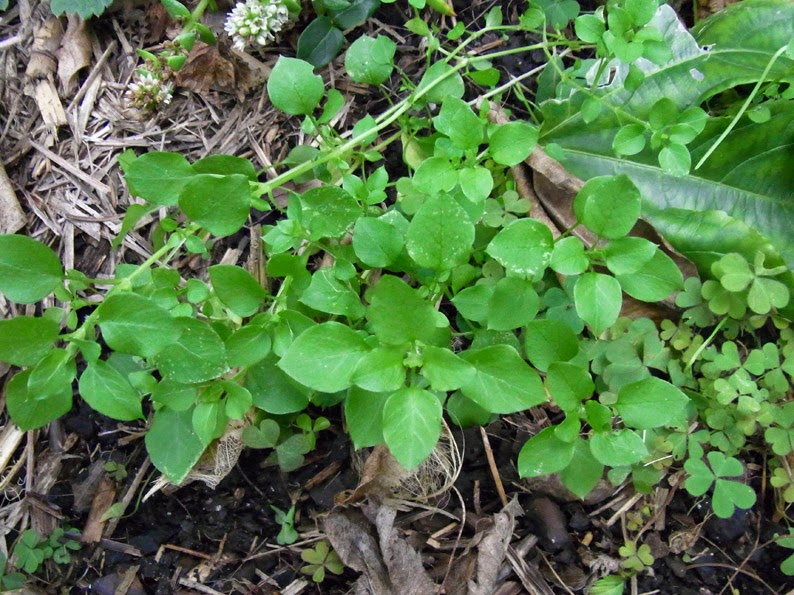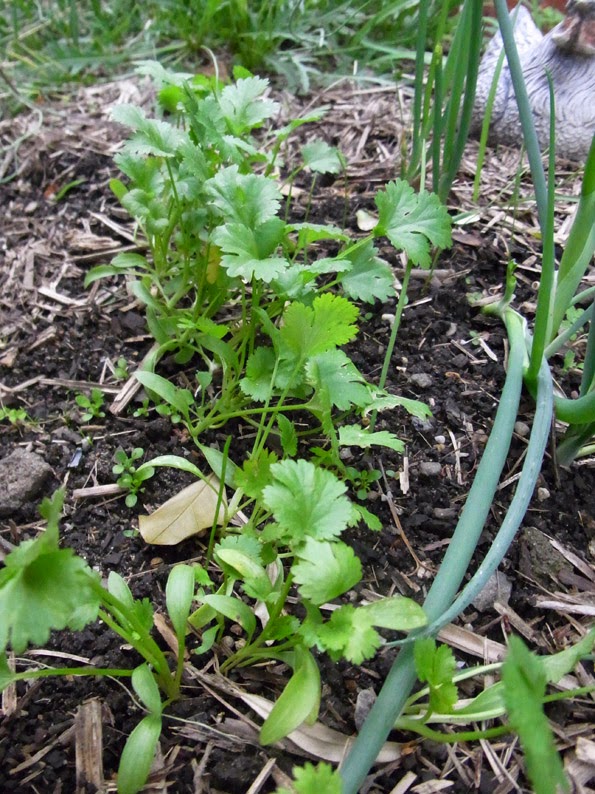When they're little, all children are adorably cute, but it's a sad fact they don't all stay that way, especially once the hormones kick in. That's what's happening in my backyard nursery at the moment. Right now there are lots and lots of baby plants coming up, some from seed I have sown, but many others are just horrible little weedlings. So how do you tell the difference between a weedling and a seedling? You just wait and let them grow up a bit more.
 |
| With its second set of little crinkly leaves appearing, this guy is showing distinct signs of curly parsleyness. It can stay! |
 |
| Uh…ohhh. Once this bub has sprouted its second rung of leaves it has revealed itself to be the start of a smothering, spreading chickweed, the bane of this garden bed's existence. It cannot stay! |
The reason for this blog posting is simply that I have been trying to establish some little green herby borders here and there by spreading seed generously in a line and waiting for them to come up. It sounds like a nice idea, and it will look good in a few weeks from now, but sowing seed in a line along bare ground just invites weedy seeds to set up shop as well. While there's not a lot to do with these herby borders after you sow the seeds, apart from some watering, the main job is weeding: keeping the uninvited intruders down in numbers so the 'wanted' herbs can get established. The parsley border is in front of what should soon turn into Pammy's flowering poppy patch.
 |
| This is my chervil border, which is coming along nicely in a line in front of our gardenias. |
 |
| I love chervil, both in the garden and in the kitchen. It can be a bit weedy if it likes your garden's soil and climate, and it does pop up here and there, but it's always so pretty. |
I say "seemingly" because I view weeding as "thinking time". There's something about simple drudgery, like washing up or weeding, that I actually like doing. While my hands are busy doing a simple task, I find I often think of story ideas, blog posting ideas, and plan out my days and weeks ahead. Maybe I'm a bit odd, but I really don't mind weeding at all. As long as there's not too much of it, that is...












